A drone-taxi, or the UAV that will never get stuck in a traffic jam, will take the passenger on the shortest route at a speed of 130 km/h and will land in any part of the city – and the prototypes of these drones are already in force. Check out the most amazing passenger drone projects here.
PASSENGER DRONES: CONQUERING CITY SKY
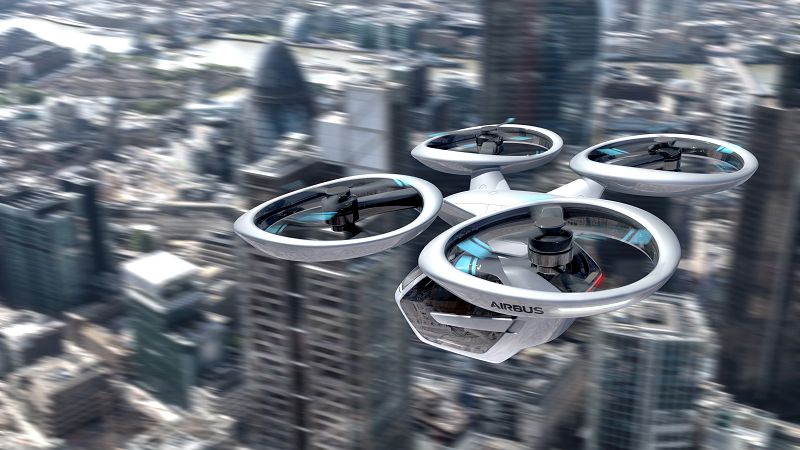
Can drones safely transport people, as a private vehicle or a part of a public transport system? Compared to helicopters, drones have a number of advantages.
There are no large blades, which cause a lot of noise and there are also no vortex flows. Flights at low altitudes, such as between houses, are also much safer – they will not entangle a building or a pole. The absence of a tail and bulky details also makes the drone much more maneuverable in flight and landing – the last one can be carried out almost anywhere.
On the other hand, drones, which can carry a cargo load of more than 200 kg, do not need long flight durations. In addition, there won’t be an initial influx of these drones implemented into an urban transport system due to the high cost of the machine. This means that they can be introduced at a safer pace.
DRONE-TAXI EHANG 184
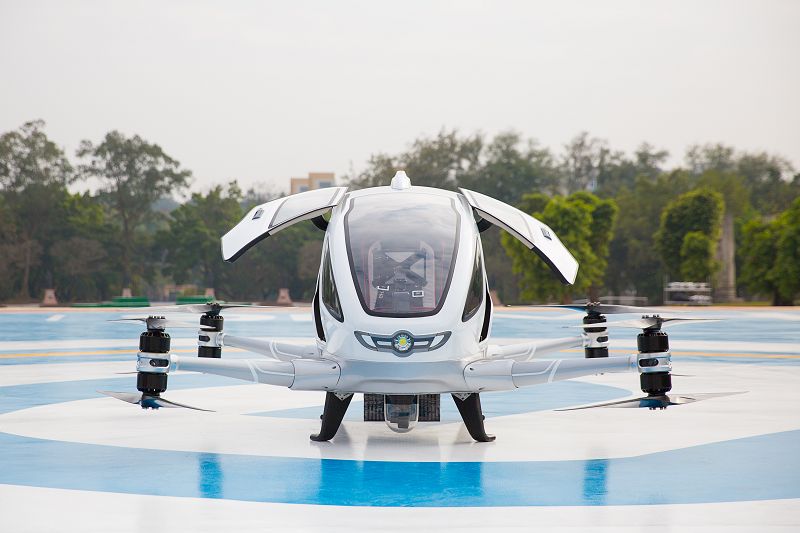
As drones come at a large buying price, they are being targeted mainly for commercial uses – particularly as taxi services. The most famous drone-taxi currently is Ehang 184, the world’s first drone-taxi. Manufactured in China, they have a video demonstrating its flying capabilities here on their YouTube channel.
The battery lasts for 23 minutes per flight. During this time, the air taxi can deliver a passenger and luggage (up to a mass of 230 kg) over a distance of about 15 km. Test flights – over a thousand of which has been conducted – were successful. The drone managed to accomplish the set-up tasks even in bad weather conditions; flying in fog, at night and during a prearranged typhoon. The drone is equipped with an obstacle detection system, and in case of an emergency a passenger can take control of it.
Aero taxi Ehang 184 is the most successful project in terms of practical application. The machine performed very well during test flights. Also, Ehang can legally test its drones in the open spaces of Nevada – with permission from the US Federal Aviation Administration.
The price of the Ehang drone-taxi starts at $200,000.
AIRBUS VAHANA: 70 KM IN 18 MINUTES
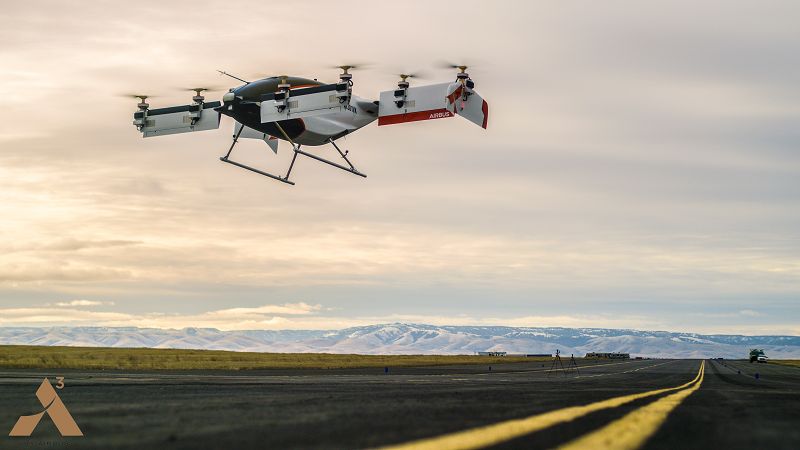
Around the time the Ehang 184 completed its first test flight, the Airbus Vahana passenger drone was created. According to its developer, Zach Lovering, the Vahana was once just a crude design on a napkin only two years ago. The conceptual sketch on an ordinary napkin has become an actual aircraft, which has already conducted the first test flight, he explained.
The project started in the summer of 2016, but the drone’s maiden voyage was delayed for a couple of months. By the end though the Vahana’s performance was not as successful as the Ehang 184. The 745 kg device went up to 5 meters, and the flight lasted only 53 seconds.
In 2020 engineers promised to present a full-fledged aero taxi, which will be able to fly from San Jose to San Francisco (about 70 km) in 18 minutes.
VOLOCOPTER: A TAXI WITH 18 PROPELLERS
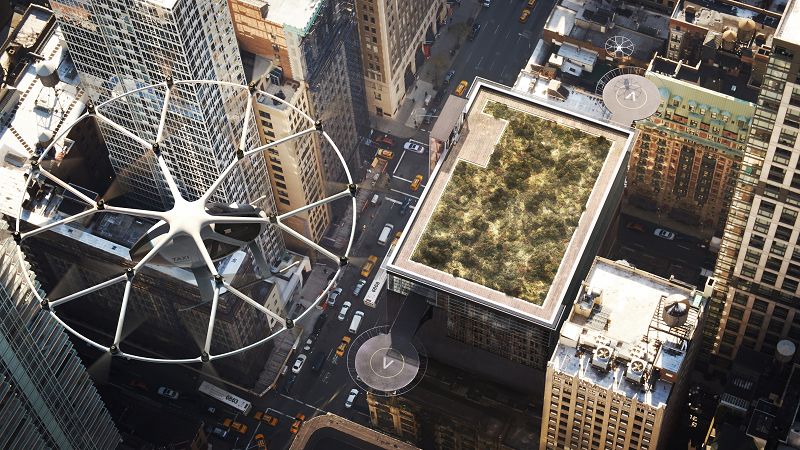
At the beginning of the year at the CES 2018 exhibition in Las Vegas, Intel introduced the flying car Volocopter. With capabilities of carrying up to two passengers, this self-driving vehicle is powered by 18 rotary engines.
The machine is built with passenger safety in mind. The battery is divided into nine unconnected compartments. Each of them feeds only two rotors. If one or even two of the batteries are completely discharged, the drone will still be able to continue flying. In the event of an emergency, air taxi passengers can even use parachutes to evacuate.
FLYING MOTORCYCLE FROM HOVERSURF
The Russian-American company Hoversurf is developing a drone, which is a hybrid of a motorcycle and quadrocopter. The device was presented at the Gitex 2017 exhibition in Dubai. Before that its developers exhibited a successful flight in Skolkovo during the Startup Village 2016 event. The most modern version of the motordrone is the Scorpion-3.
This drone has been coined a hoverbike and is considered one of those machines meant for extreme piloting. Currently, the developers are dealing with the drone-motorcycle’s biggest weakness – the vulnerability of rotors.
TRIP FOR 4 IN 1 DRONE
Joby, brought to you by the startup Joby Aviation, announced at the beginning of the year gaining $ 100 million of investment for their passenger-drone project. Money for the startup was raised by large corporations including Toyota, JetBlue and Intel. The UAV is being tested at a private airfield.
Unlike other companies, Joby Aviation keeps the project implementation process a secret. It is so far only known that the drone will have 12 rotary electric motors, and four passengers will be able to board at once. The drone will be able to overcome the distance of 240 km and rise above the ground by several thousand meters.
AUDI AND AIRBUS FLYING TAXI DRONE
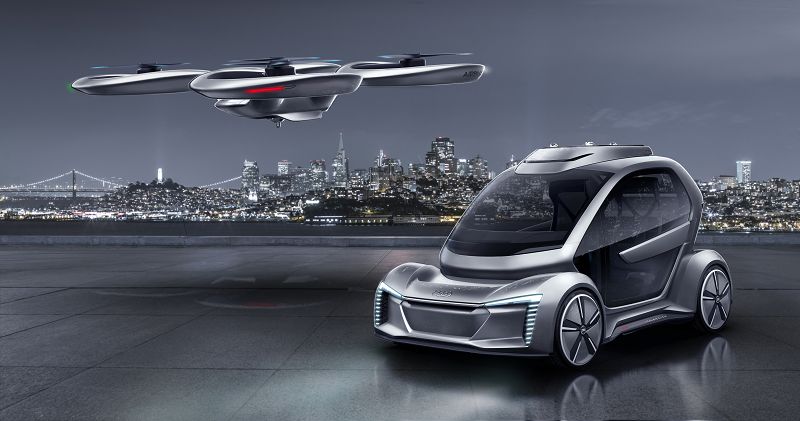
Now Audi together with Airbus and Italdesign has offered travelers a glimpse of the future, after announcing a new project of elaborating autonomous cars that can transform into self-flying drones. Its brand-new Pop.Up Next is a driverless car, drone and taxi all packed into one.
Featuring a 49-inch screen, the cabin of the Pop.Up Next is designed to be fancy and relaxing. The new interface makes travel simple by using gesture control, eye-tracking, facial recognition, and by implementing voice control. Though this model looks quite ambitious, the concept will launch a new dimension in transportation system and assist with the growing issue of congested traffic in urban cities.
By Maria Shafranova